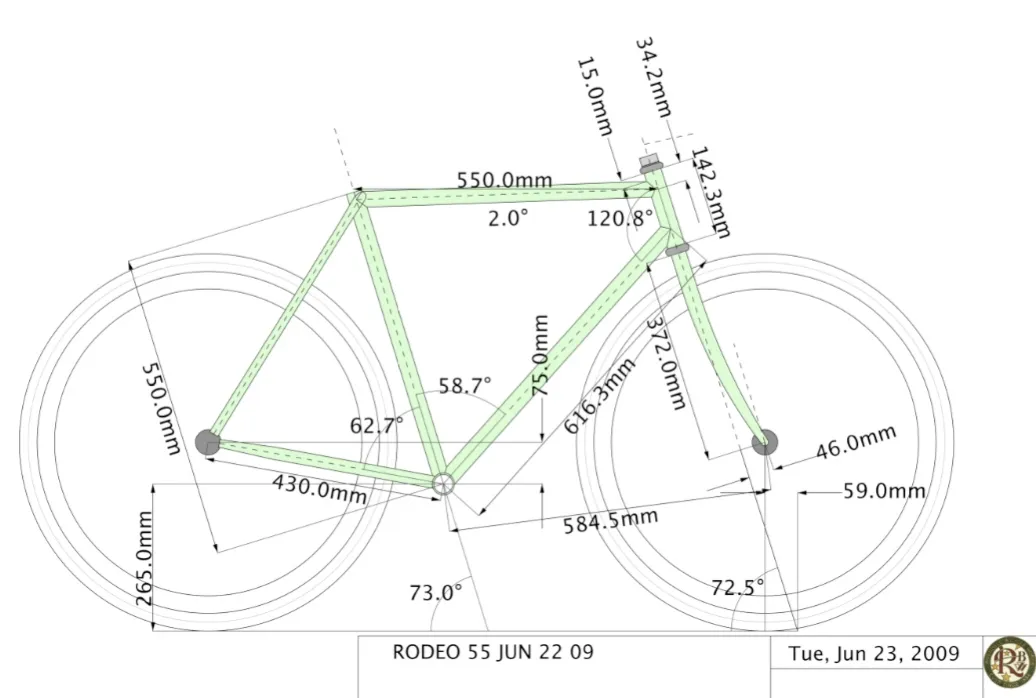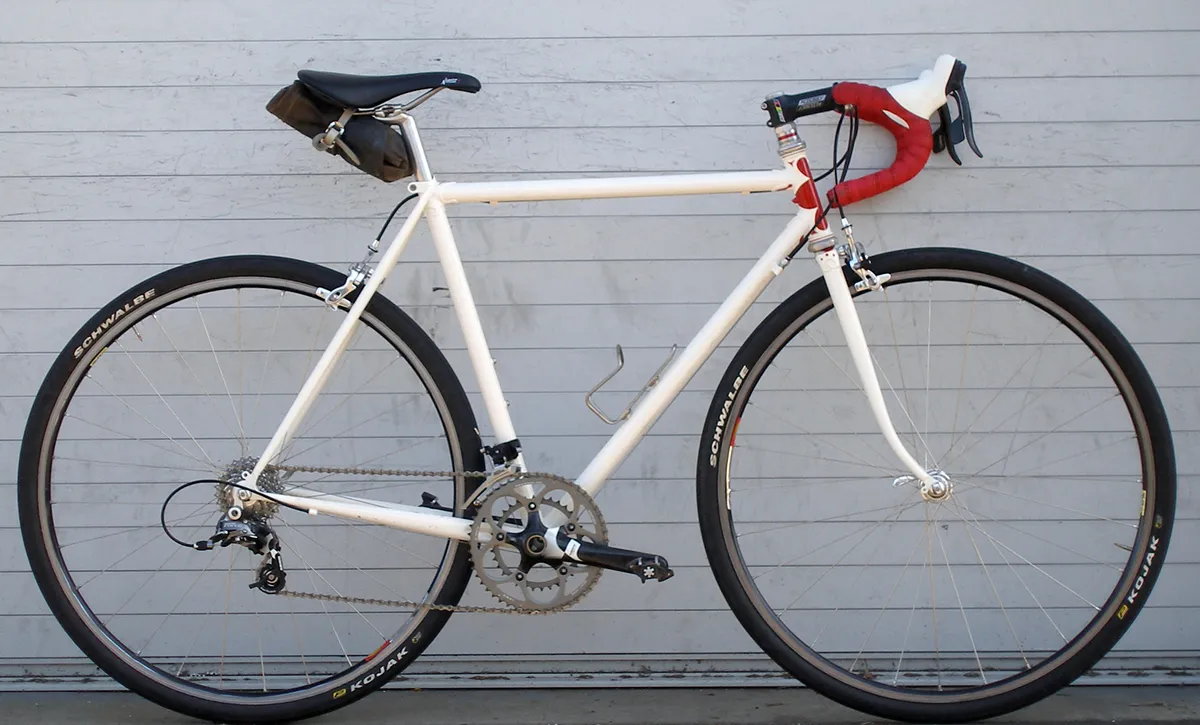California-based Rivendell Bicycle Works is rolling out its first club racer this month, the US$2,000 Roadeo, a lightweight, lugged steel road frame and fork-crowned handmade steel fork like those raced by Jacques Anquetil and Eddy Merckx in the 1960s and '70s.
When Bridgestone Cycles USA closed in late 1994, product and marketing manager Grant Petersen laid the foundation for Rivendell Bicycle Works, focusing on lugged, steel bicycles, then the standard for high-quality bikes. As the company grew, so did Petersen's desire to design and sell touring and 'country' bikes, like those rolling off factory floors in England and France in the 1940s and '50s onward.
BikeRadar caught up with Petersen to find out why the 55-year-old founder decided to add a club racer to the Rivendell stable.
BikeRadar: What prompted the development of the Roadeo?
Grant Petersen: "Well, Mark here rides in a club, and he kept seeing his clubmates buying carbon clubby bikes; and one fellow got a Colnago steel bike set up for racing-club rides, and Mark thought if we had something to offer them, they might get ours instead.
Mark rides his 'cross bikes on club rides -- usually with fat slick road tyres (32 to 33mm), and he has no problem with that, but he thought we should do a bike that kept our focus (lugged steel) but didn't overlap all the others. I have a habit of doing that, because I think all bikes should be good for almost all things. So we have these big overlapping function circles, with each bike overlapping the other bikes 50 to 90 percent. They may use different brakes and be different prices, but basically, if you come here and are looking for an all-around bike between about US$2,000 and $3,500, it doesn't rule out anything...until now.

So it was all Mark's idea, and I designed the frame and looked it over to make sure there was nothing foolish. At first it was going to have short-reach brakes, but (Rivendell employee) Jay thought it should have standard (57mm reach) brakes, and Mark thought that was a good idea, and would help differentiate it from the razor bikes most club riders ride...and so that's how it shaped up: a sub-20lb steel bike that fits fenders with road tyres and can actually fit a 35mm tyre if conditions call for it. It's still versatile -- it's just light, zippier, and more versatile. Racks NO, fenders YES...so you can ride it all year.
Close followers of Rivendell and Bridgestone Bicycles may notice some influence from the RB-1. Are there any similarities?
The RB-1 was as good as I could do given considerable limitations -- prices, dealer requests, a sales staff that I was already pushing to its limits with bikes that were just enough different to be difficult to sell to dealers who wanted us to be like Trek and Specialized.
I had great support from Bridgestone Japan (our parent company), but over the years I probably made it difficult for some (not all) of the reps to sell the bikes. The RB-1 and XO-1 regularly sell for more old and used on eBay than they did new and fresh back then. Maybe it's the lure of the unavailable, but let me tell you, they were NOT that popular back then. I'm proud of them, but our current bikes, every one of them, is conceived, designed, and built with ZERO constraints, with ZERO fear of repurcussions.
I remember when it was clear that Bstone was closing and that I'd start my own business. There's a Bob Dylan line that seemed to sum up my attitude perfectly then, and still now: "I ain't hauling any of my lambs to the marketplace anymore." I don't know what he meant by it, but to me it meant I'm not holding back, sacrificing anything I don't want to sacrifice; no more compromises to keep the peace.
The Bstones were good bikes, especially considering their competition. They were lugged and steel, had classic looks and rode really well. They were excellent values and are still excellent bikes, but they would absolutely not make the starting team here.
Is the Roadeo lugset or for crown borrowed from an existing Riv model, or a combination of models?
It uses the same lugs as the Legolas and A. Homer Hilsen, but they're modified to cut grams. And the bottom bracket shell isn't ours. It's a real shell like ours, but it fits a 30mm seat tube that necks down to 28.6 by the time it reaches the front derailer, and it stays there to the top.
It has an integral chainstay bridge, and uses a slightly lighter seat tube, and the combo saves about 3 ounces, or about the same amount of weight you'd lose by spitting five times and cutting off a mullet.
But we wanted to break 20 pounds without using dumb wheels or foolish parts. The goal was 19.99 pounds, and we'll beat that a bit with nothing shameful on it, and a real beautiful, strong steel fork (with our crown).
Waterford Precision Cycles in Wisconsin is making it for us, and I've leaned heavily on (Waterford designer) Marc Muller to get rid of the last about four ounces. It's not what I'm used to doing, it's not my strength, but this is a different bike for us, and when somebody's better at something than I am, I appreciate the help."
Rivendell Roadeo sizes include 51, 53, 55, 57, 59, 61, and 63cm. According to Petersen, delivery is approximately four months, and colour options include white with red or blue accents. Customers can chose a 1-inch threadless or threaded fork.
For more information, visit www.rivbike.com.
